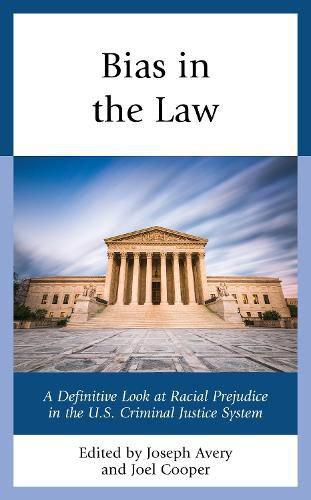Readings Newsletter
Become a Readings Member to make your shopping experience even easier.
Sign in or sign up for free!
You’re not far away from qualifying for FREE standard shipping within Australia
You’ve qualified for FREE standard shipping within Australia
The cart is loading…






Racial bias in the U.S. criminal justice system is much debated and discussed, but until now, no single volume has covered the full expanse of the issue. In Bias in the Law, sixteen outstanding experts address the impact of racial bias in the full roster of criminal justice actors. They examine the role of legislators crafting criminal justice legislation, community enforcers, and police, as well as prosecutors, criminal defense attorneys, judges, and jurors. Understanding when and why bias arises, as well as how it impacts defendants requires a clear understanding how each of these actors operate. Contributions touch on other crucial topics-racialized drug stigma, legal technology, and interventions-that are vital for understanding how the United States has reached this moment of stark racial disparity in incarceration. The result is an important entry into understanding the pervasiveness of racial bias, how such bias impacts legal outcomes, and why such impact matters. This is an issue that is as relevant today as it was fifty-or even one hundred fifty-years ago, and collection editors Joseph Avery and Joel Cooper provide a glimpse at how to proceed.
$9.00 standard shipping within Australia
FREE standard shipping within Australia for orders over $100.00
Express & International shipping calculated at checkout
Racial bias in the U.S. criminal justice system is much debated and discussed, but until now, no single volume has covered the full expanse of the issue. In Bias in the Law, sixteen outstanding experts address the impact of racial bias in the full roster of criminal justice actors. They examine the role of legislators crafting criminal justice legislation, community enforcers, and police, as well as prosecutors, criminal defense attorneys, judges, and jurors. Understanding when and why bias arises, as well as how it impacts defendants requires a clear understanding how each of these actors operate. Contributions touch on other crucial topics-racialized drug stigma, legal technology, and interventions-that are vital for understanding how the United States has reached this moment of stark racial disparity in incarceration. The result is an important entry into understanding the pervasiveness of racial bias, how such bias impacts legal outcomes, and why such impact matters. This is an issue that is as relevant today as it was fifty-or even one hundred fifty-years ago, and collection editors Joseph Avery and Joel Cooper provide a glimpse at how to proceed.